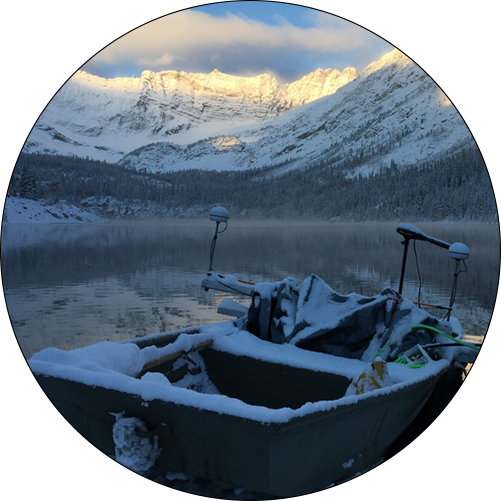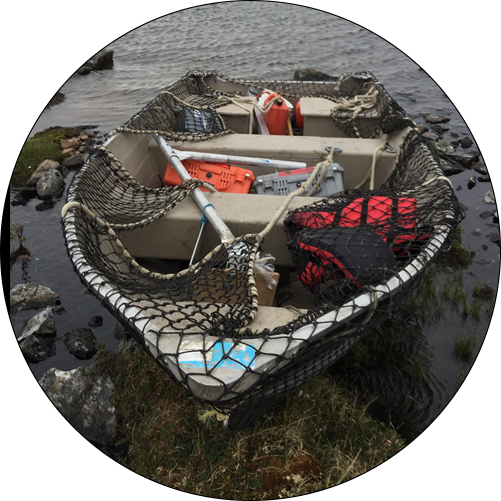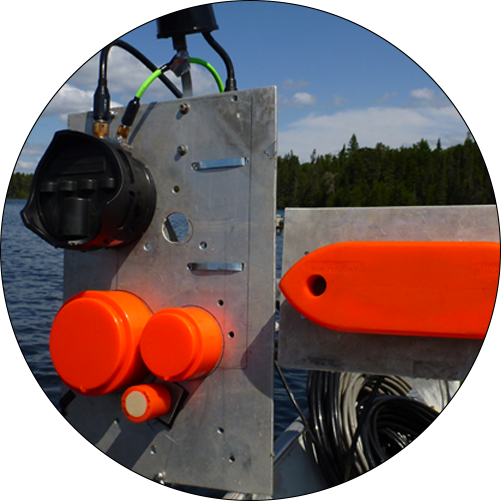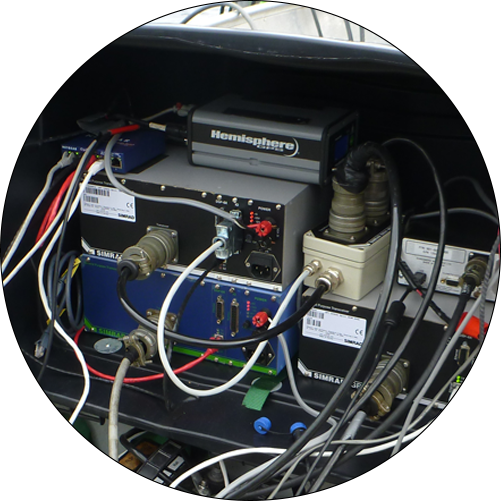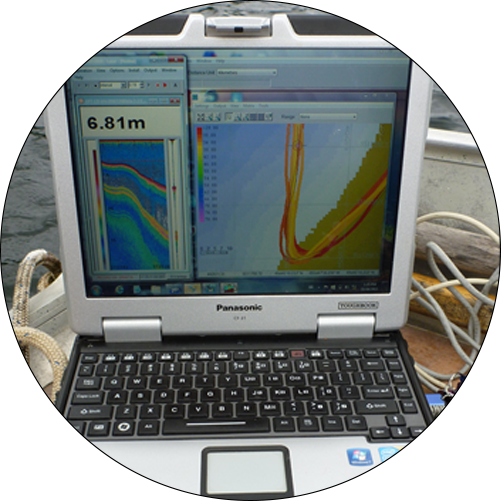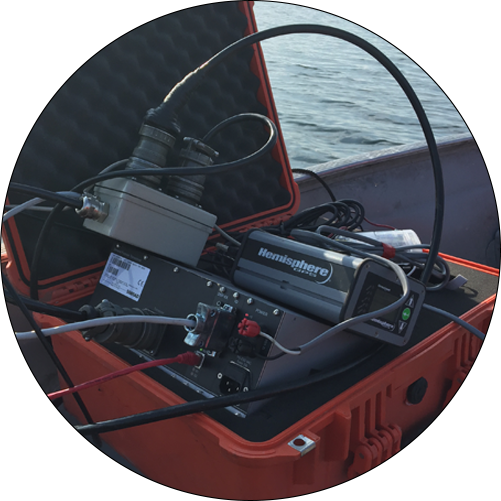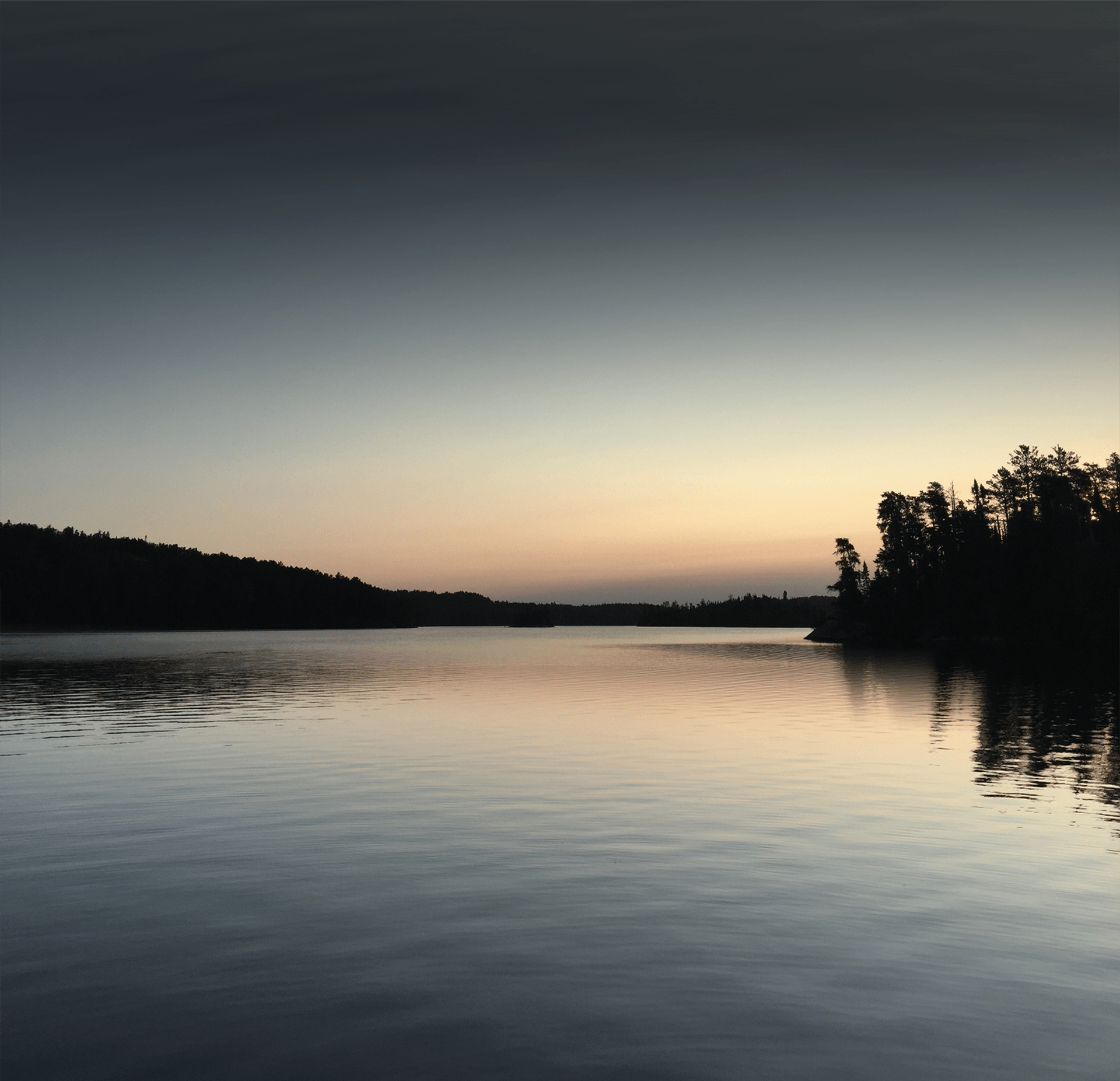Milne Technologies provides full fisheries acoustic surveying services for assessing fish populations within in-land lakes, rivers and Great Lakes coastal habitats. We use state-of-the-art hardware and technology to provide the quality data necessary to make scientifically rigorous assessments of pelagic fish density, biomass and abundance.
We provide critical fish density estimates and habitat data for Environmental Effects Monitoring (EEM) assessment projects within the mining, energy and marine construction industries.
Our Simrad EK60/80 quantitative echosounder system is available with a wide range of transducer frequencies from 70 kHz to 710 kHz; typical fisheries surveys are completed using our 120 kHz split-beam system.
- With the split-beam echosounder system, the target strength of individual fish targets can be used to estimate the fish size and/or age class composition of all pelagic fish within different depth layers or habitat regions.
- Prey fish density and standing biomass estimates are generated from echo integration analyses.
- Density estimates of large bodied predators are usually derived using the "echo counting" method where contiguous single targets are grouped into "fish tracks" and fish density is calculated as the number of fish track detected within the total acoustic beam sample volume.
- Both methods provide reliable and reproducible estimates of fish density, instantaneous biomass and total abundance.
We provide all of the electronics, transducer gunwale mount and GNSS system within a portable package to allow the full survey system to be deployed on a small boat within remote locations.
Our echosounder transducers are calibrated upon completion of each survey to ensure reliable and accurate fish size and density estimates.
Special applications available include:
- Mobile shallow water horizontal beaming surveys.
- zooplankton community assessment.
- Longterm and remote fish monitoring using stationary up-looking and side-looking deployments.
Survey Design and Methodology
Careful consideration and planning of survey design and methodology is crucial when providing meaningful information about the population abundance, behaviour, or spatial distribution of aquatic organisms. When designing hydroacoustic surveys, the user should consider a number of questions:
- What frequency should I use?
- Should I complete a daytime or nighttime survey?
- Where do I place my transect lines?
- How long should my transects be?
These are just a few of the questions that Milne Technologies can help you answer before you get on the water, thus ensuring that the data you collect is meaningful and accurate.
To help you effectively plan and design your survey, it is important to consider the following;
- the geographic extent and spatial distribution of the population,
- the horizontal and vertical movements of the focal species,
- behavioral characteristics such as schooling and spawning,
- available vessel time and budget.


